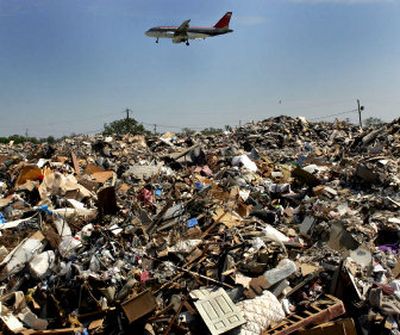Water didn’t go over canals’ walls in New Orleans

NEW ORLEANS – Hurricane Katrina’s storm surges were never high enough to go over the walls of two canals whose failure caused massive flooding in western and central New Orleans, investigators have determined.
The finding appears to eliminate an early theory about why walls failed along the 17th Street and London Avenue canals. The earlier theory claimed flood waters flowed over concrete and steel walls and then scoured out the soil in back of the walls, leading to their collapse.
A team of engineers instead found evidence of a massive movement of the embankment underneath sections of the floodwalls. The water pushed one section of the 17th Street levee back 35 feet.
Why the soil failed is still “a mystery story” awaiting further investigation, said Raymond Seed, a civil engineering professor from the University of California at Berkeley.
Adding to the mystery, the floodwalls along the nearby Orleans Canal made it through the storm intact, even though they were subjected to similar surges of water, and the floodwalls on the other two canals only broke in three places, he noted.
Investigators were not willing to say whether construction or design flaws contributed to the collapse, noting they needed more time to study documents and blueprints. Investigators have not been able to examine the “as-built” drawings that would show the depth of the steel piling inside the walls and other construction details, Seed said.
The collapse of the floodwalls on the 17th Street and London Avenue canals is of particular interest because most of New Orleans’ flooding was caused by water flowing through those breaches.